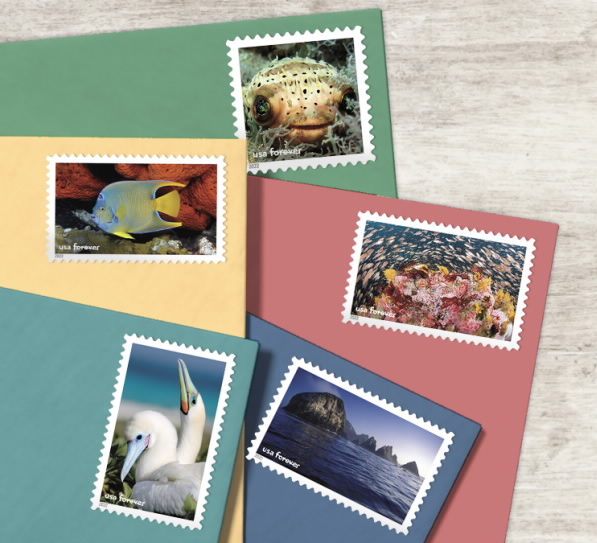
Stories Behind the Stamps
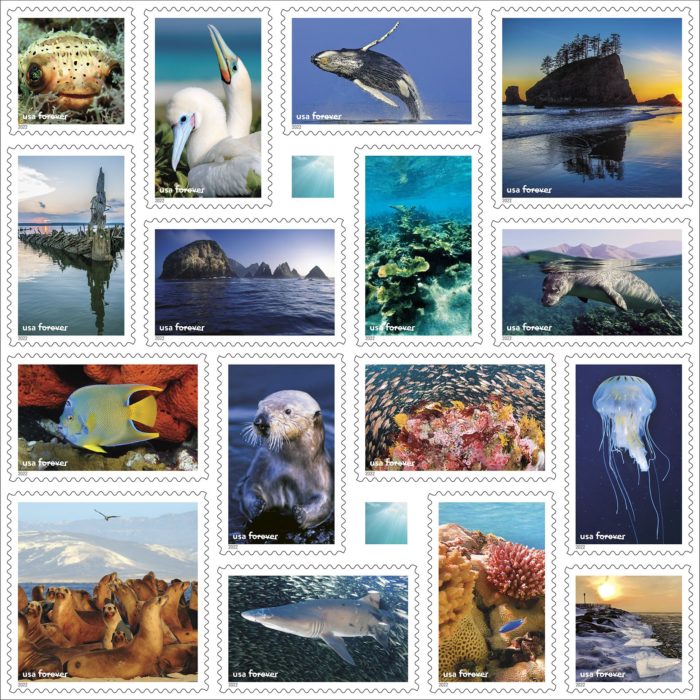
Issued on August 5th, 2022, these national marine sanctuary themed stamps highlight the beauty found across our national marine sanctuaries. Within this pane, 16 stamps showcase abundant wildlife and diverse ecosystems.
“The new Forever stamps celebrate the majestic seascapes, wildlife, and underwater wonders that our National Marine Sanctuary System offer,” said Kris Sarri, former president and CEO of the National Marine Sanctuary Foundation. “For half a century, our sanctuaries have protected these treasures for all of us to enjoy, explore, and discover. As we mark the 50th anniversary of the Sanctuary System, we must recommit to saving these spectacular places and protecting their splendor for generations to come.”
Here, some of the photographers expand on the stories behind the stamps, their work behind the camera, and what it took to capture such stunning images of the sanctuary system.
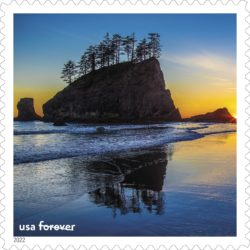
“Our video production team was completely exhausted after an extremely long day of filming up-and-down Olympic Coast, which is the rainiest place in the continental United States. However, just as I entered the campground RV, which we had rented for a couple days in order to charge batteries as we slept, the sun rays miraculously broke through the evening clouds. It was less than 60 minutes before the golden hour and we were only 7 miles away from the most scenic beach I had ever seen in my life. Two of us agreed to go, but the third and last team member refused our pleas as he was ready to finally relax. There was no time to discuss the matter so I grabbed some gear and hurried to our car for the short drive to the beach trailhead. As the car began rolling down the campsite dirt road, the third crew member jumped into the backseat with his gear and a smirk on his face, clearly unwilling to let us capture the potentially amazing seascape without him. There were even less clouds when we arrived at the trailhead. We couldn’t believe the luck! We found ourselves in a frenzy, securing our backpacks and gear for the short 3/4 mile hike on a gorgeous trail under a thick tree canopy and lush ferns, which we practically ignored in order to attain our goal. Sure enough! We exited the forest and were presented with the most gorgeous seascape sunset combo imaginable. It literally stopped me in my tracks and I had to take it in for a few short moments without the camera before I got to work.” – Matt McIntosh
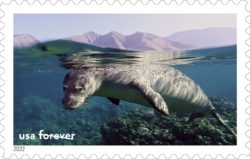
“The image of the Endangered Hawaiian Monk Seal was taken while snorkelling in National Marine Sanctuary waters off the Hawaiian Island of Maui. I am an avid underwater photographer and never go in the water without my camera, so when this surprise encounter occurred, I was able to get a few images – one a split image showing the West Maui mountains in the background, before moving away from the animal, as monk seals are protected by state and federal regulations. The image represents an opportunity to showcase an iconic (and endemic) species found within the sanctuary and throughout the waters surrounding the Hawaiian Islands.” – Ed Lyman
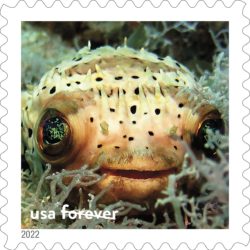
“I spent 30 years as an Audio/Video/Film technician working in Motion Pictures and Television. I retired to Key Largo 10 years ago and now search for images in the Sea. Been doing underwater photography for about 15 years. I entered the National Marine Sanctuary photo contests over the years and provided images upon request. I was diving with friends from Rainbow Reef Dive Center when I took this photo. We always seem to find interesting Marine Life together. The stamp chosen is the Balloonfish, Porcupinefish in the upper left hand corner. They are probably my favorite fish to photograph as they always seem to have a smile on their face. The hard part is shooting them straight on as they always seem to want to rotate slowly away from your camera. This little guy seemed comfortable with me close by. Maybe he liked the Sealife 2300 light or possibly saw a reflection on my Canon G16 lens. I am honored to have one of my photos in this National Marine Sanctuary that protects areas of the marine environment with special conservation, recreational, ecological, historical, cultural, archeological, scientific, educational, and aesthetic qualities. The National Marine Sanctuary gives us hope to help save our oceans and natural American bodies of water. We see these Balloonfish, and other Porcupinefish in our Florida Keys waters frequently as we saw this fella diving with Rainbow Reef Dive Center at Molasses Reef which is one of my favorite dive sites along with Snapper Ledge, French, Conch, and Elbow Reefs and North Dry Rocks.” – Daryl Duda
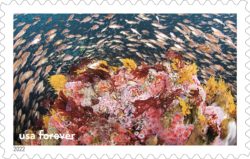 “This picture was taken during a research trip we supported at Cordell Bank in 2010. I often remember this mission as one of the most exciting in my career. The Office of National Marine Sanctuaries has a few small teams of technical divers that can access deep-water sites like this, which is how I ended up on this project. It is a very difficult site to dive, it’s deep, far offshore, cold and only small pinnacles rise to reachable depths. Having never been diving in northern California, I assumed we would find green murky conditions with a somewhat muted color palette similar to the northeast. I was wrong! The first dive we did here everyone resurfaced in awe. Many on our team said it felt like going to Oz. The vibrance of color and the concentration of life was like nowhere else I’ve seen before or since. This is truly a special place.” – Joseph Hoyt
“This picture was taken during a research trip we supported at Cordell Bank in 2010. I often remember this mission as one of the most exciting in my career. The Office of National Marine Sanctuaries has a few small teams of technical divers that can access deep-water sites like this, which is how I ended up on this project. It is a very difficult site to dive, it’s deep, far offshore, cold and only small pinnacles rise to reachable depths. Having never been diving in northern California, I assumed we would find green murky conditions with a somewhat muted color palette similar to the northeast. I was wrong! The first dive we did here everyone resurfaced in awe. Many on our team said it felt like going to Oz. The vibrance of color and the concentration of life was like nowhere else I’ve seen before or since. This is truly a special place.” – Joseph Hoyt
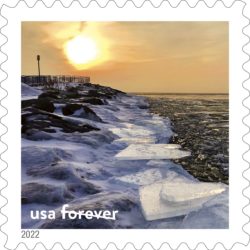
“The photo I took is from Thunder Bay National Marine Sanctuary. Usually the photos presented from Thunder Bay are from the amazing shipwrecks found within the sanctuary, or the historic lighthouses surrounding the area. However, Alpena in the winter can also be just as unique. That day was sunny and beautiful, and the way the ice collected and stacked itself next to the shoreline made for a really cool photo. Through the image, you can almost feel the crisp coldness of the air. Being originally from Michigan, one of my favorite things is the sun shining on the ice and snow. Alpena in the winter makes for a quiet setting to appreciate mother nature in her frozen world. I am so honored the photo was chosen to represent such an amazing place.” – Kate Thompson
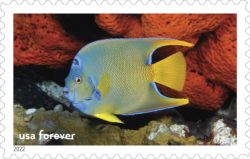 “The queen angelfish is a brilliantly colored iconic inhabitant of coral reefs and coral communities of Flower Garden Banks National Marine Sanctuary. It is one of the most beautiful tropical fish on coral reefs of the Caribbean region, and gets its name from the blue-ringed spot on the top of its head which resembles a “crown”. It is also one of a limited number of reef fish that eats marine sponges, which are difficult for most species to digest. This photo was taken at Stetson Bank, a spectacular geologic feature in the northern Gulf off the coast of Galveston, Texas, which supports a diverse and colorful coral and sponge community. The electric colors of the angelfish accentuated by a backdrop of bright orange sponges provided a perfect opportunity for this photograph.” – George (G.P.) Schmahl
“The queen angelfish is a brilliantly colored iconic inhabitant of coral reefs and coral communities of Flower Garden Banks National Marine Sanctuary. It is one of the most beautiful tropical fish on coral reefs of the Caribbean region, and gets its name from the blue-ringed spot on the top of its head which resembles a “crown”. It is also one of a limited number of reef fish that eats marine sponges, which are difficult for most species to digest. This photo was taken at Stetson Bank, a spectacular geologic feature in the northern Gulf off the coast of Galveston, Texas, which supports a diverse and colorful coral and sponge community. The electric colors of the angelfish accentuated by a backdrop of bright orange sponges provided a perfect opportunity for this photograph.” – George (G.P.) Schmahl
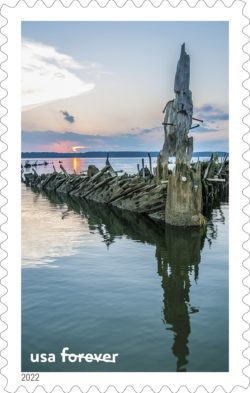
“I took the photo on August 26, 2016. At the time I was working as a media specialist at the Chesapeake Conservancy, which was advocating to designate Mallows Bay as a National Marine Sanctuary. Part of that effort was to release an online paddle guide that showed historical photos of the shipwrecks alongside modern day photos, with some historical background. I timed this shoot so that low tide on the Potomac River coincided with sunset, so I could get the best combination of the shipwrecks sitting above the water and gorgeous soft light. I was in my kayak drifting along, laying flat so that I could get down to the water level and frame the wreck in my photo. I had to stay as still as I could with flies biting my legs, but I was able to get that great shot.” – Peter Turcik
To see the full National Marine Sanctuaries Stamps collection and order yours, please visit usps.com/stamps.
